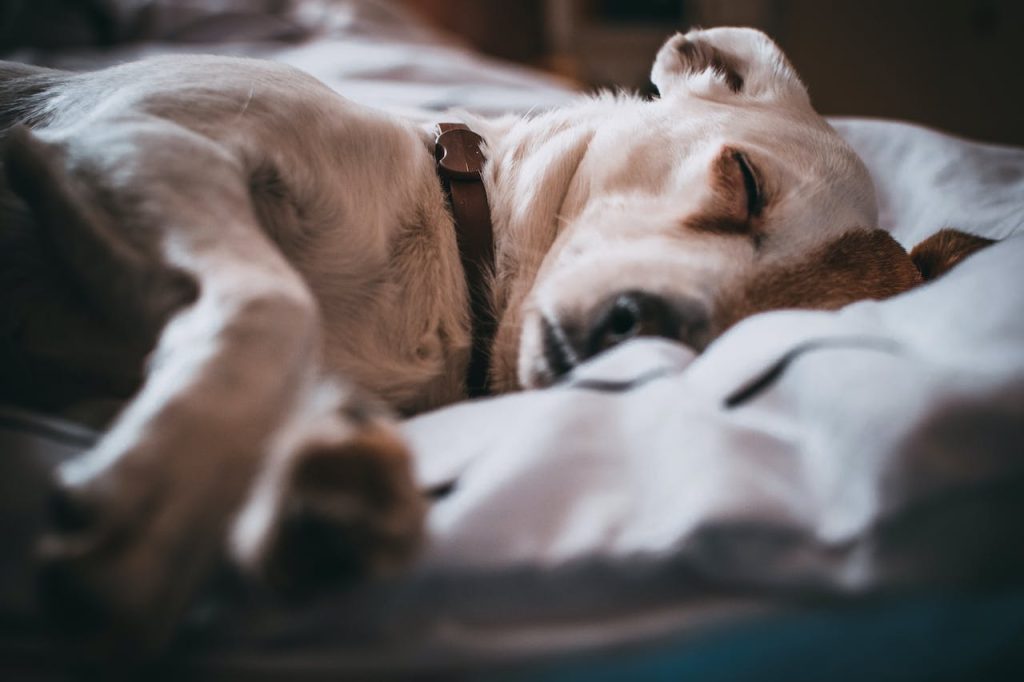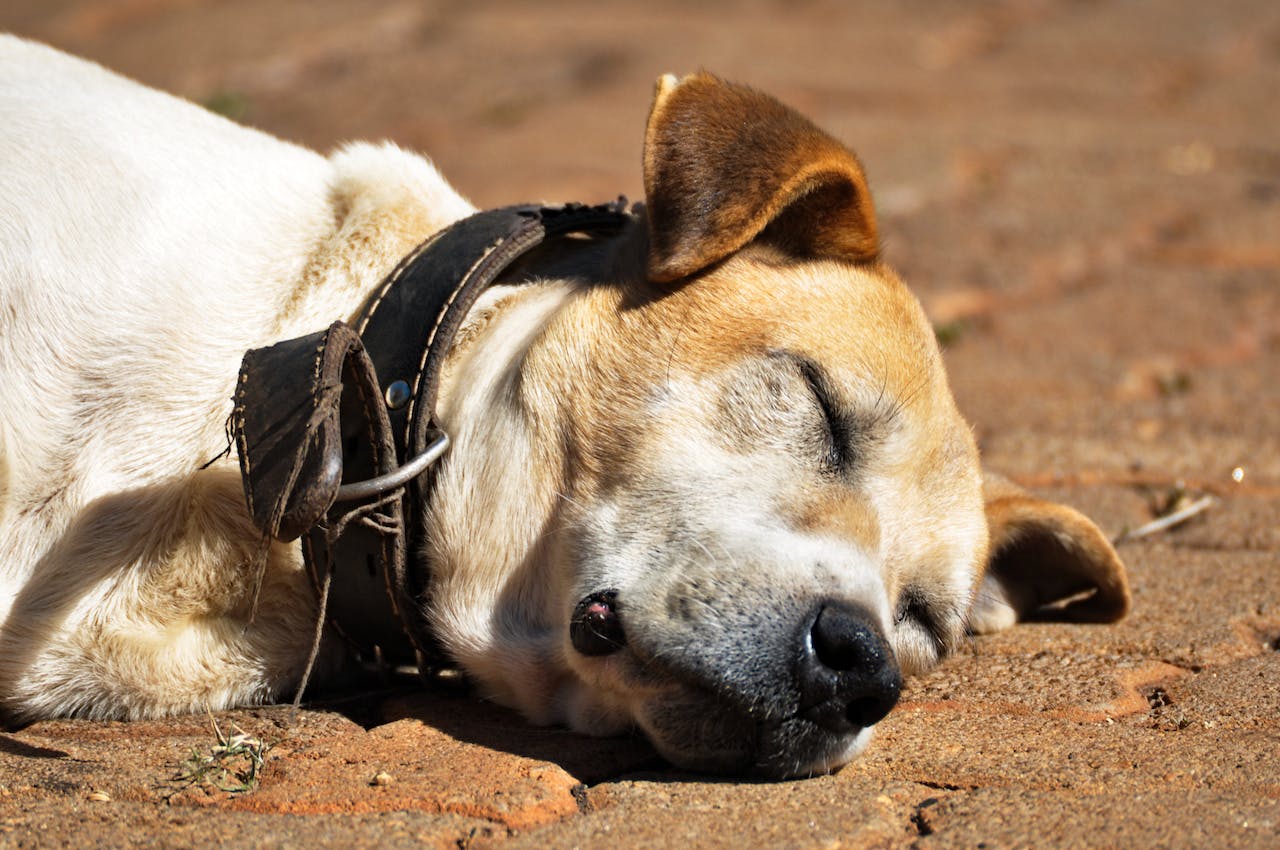Can Dog Sleep With Harness On
No, dogs should not sleep with a harness on as it can be uncomfortable and potentially dangerous for them. Sleeping with a harness restricts their movement and can lead to discomfort or even injury.
Additionally, continuous wear of a harness can cause rubbing and chafing on their skin, leading to irritation and sores. It’s important to allow dogs to have a comfortable and unrestricted sleeping environment to promote good rest and overall well-being.
Related post-
- Can Dogs See Through Glass?
- Can Dogs Get Sick from Being in the Rain
- Can Dogs Smell Through Vacuum Sealed Bags
How Wearing A Harness Affects Dogs’ Sleep Quality
Wearing a harness can significantly impact a dog’s sleep quality. The discomfort caused by a harness can make it difficult for dogs to find a comfortable sleeping position, leading to restless nights and interrupted sleep. Harnesses that are too tight or made from uncomfortable materials can cause chafing and irritation, further exacerbating the problem.
Dogs are creatures of habit, and any changes to their routine can disturb their sleep patterns. Introducing a harness as part of their bedtime routine can create confusion and anxiety, making it harder for them to relax and fall asleep. It is important to gradually acclimate dogs to wearing a harness during sleep to minimize any negative effects.
Understanding the comfort level of sleeping with a harness is crucial in ensuring that dogs get the restful sleep they need. Choosing a well-fitting, padded harness made from dog-friendly materials can help alleviate any discomfort and promote better sleep. Regularly checking the fit and condition of the harness is also essential to address any potential discomfort or wear and tear that may affect a dog’s sleep quality.

Potential Benefits Of Letting Dogs Sleep With A Harness
A dog harness can provide several potential benefits when it comes to allowing dogs to sleep with them. One of the main advantages is minimizing strain on the neck and back, as the harness redirects pressure away from these areas. This is especially beneficial for dogs with neck or back problems, as the harness provides extra support during sleep.
A harness can enhance overall stability and security while dogs are resting, preventing them from rolling or falling off the bed. In some cases, harnesses can also assist dogs with medical conditions by offering a sense of comfort and stability throughout the night. Overall, allowing dogs to sleep with a harness can provide a safe and comfortable sleeping environment for our beloved pets.
Note: This is a brief summary and not an exhaustive study of the potential benefits of dogs sleeping with a harness.
Considerations For Allowing Dogs To Sleep With A Harness
Allowing dogs to sleep with a harness can provide added security and control, but it’s important to consider their comfort level. Dogs might need time to adapt to sleeping with a harness, so their comfort should be evaluated.
When selecting a suitable harness for sleep, it’s crucial to consider the material, ensuring it is soft and non-irritating. Proper fit and adjustment are also essential to prevent discomfort or restriction of movement while sleeping.
Safety precautions should be taken, such as ensuring the harness is not too tight or loose. Regular inspection for wear and tear is necessary to prevent any accidents. Additionally, monitoring for signs of discomfort or irritation is important.
If any signs are observed, it may be best to discontinue letting the dog sleep with a harness. By carefully considering these factors, dogs can potentially sleep safely and comfortably with a harness.
Alternatives To Sleeping With A Harness
Many dog owners wonder if it is safe for their pets to sleep with a harness on. While some dogs may be comfortable sleeping with a harness, there are alternatives that can provide a more comfortable sleeping environment for your furry friend.
One alternative is to select appropriate bedding and sleep surfaces for your dog. This can include a cozy dog bed or blanket that offers ample support and cushioning.
Creating a calm and secure sleep environment is also important. This can be achieved by minimizing noise and distractions in the sleeping area, as well as providing a safe and enclosed space for your dog to relax in.
If your dog is used to sleeping with a harness on, there are harness-related options that can be explored during rest. One option is to let your dog sleep with a loosely attached leash, which can provide a sense of security without the confinement of a full harness.
Another option is to utilize a gentle body wrap instead of a full harness. This can provide a comforting pressure around your dog’s body without restricting their movement or causing discomfort.
How To Introduce A Harness To Dogs For Sleep
Introducing a harness to your dog for sleep can be a gradual process that requires positive reinforcement training techniques, patience, and consistency. Giving your furry friend time to acclimatize to sleeping with a harness is essential.
Start by introducing the harness during playtime, allowing your dog to wear it for short periods before bedtime. Use treats and praise to associate wearing the harness with positive experiences. Gradually increase the duration your dog wears the harness each day until they are comfortable sleeping with it.
It’s important to be patient and consistent throughout the transition process. If your dog shows resistance or anxiety, seeking professional help from a trainer or behaviorist can provide additional guidance and support.
Remember, a gradual and positive approach is key in ensuring a successful and stress-free transition to sleeping with a harness.
Potential Risks Or Discomfort Associated With Sleeping In A Harness
Restricted movement or discomfort: Dogs may experience restricted movement or discomfort when sleeping with a harness on. This can prevent them from finding a comfortable position and can lead to a disrupted sleep.
The constant rubbing of the harness against the dog’s skin during sleep can cause skin irritation or chafing. This can be not only uncomfortable for the dog but also increase the risk of skin infections.
Identifying signs of discomfort or distress during sleep: It’s important for dog owners to be aware of signs of discomfort or distress while their dogs sleep with a harness on. This can include restlessness, whining, or difficulty falling asleep. If these signs are observed, it’s best to remove the harness to ensure a good night’s sleep for the dog.
Conclusion
Sleeping with a harness on can affect your dog’s comfort and safety. While some harnesses are designed for extended wear, it’s generally recommended to remove them at night to allow your furry friend to rest without any restrictions. The harness may cause discomfort or restrict movement during sleep, potentially leading to injuries.
Prioritize your dog’s well-being by ensuring they can sleep peacefully without the harness.
